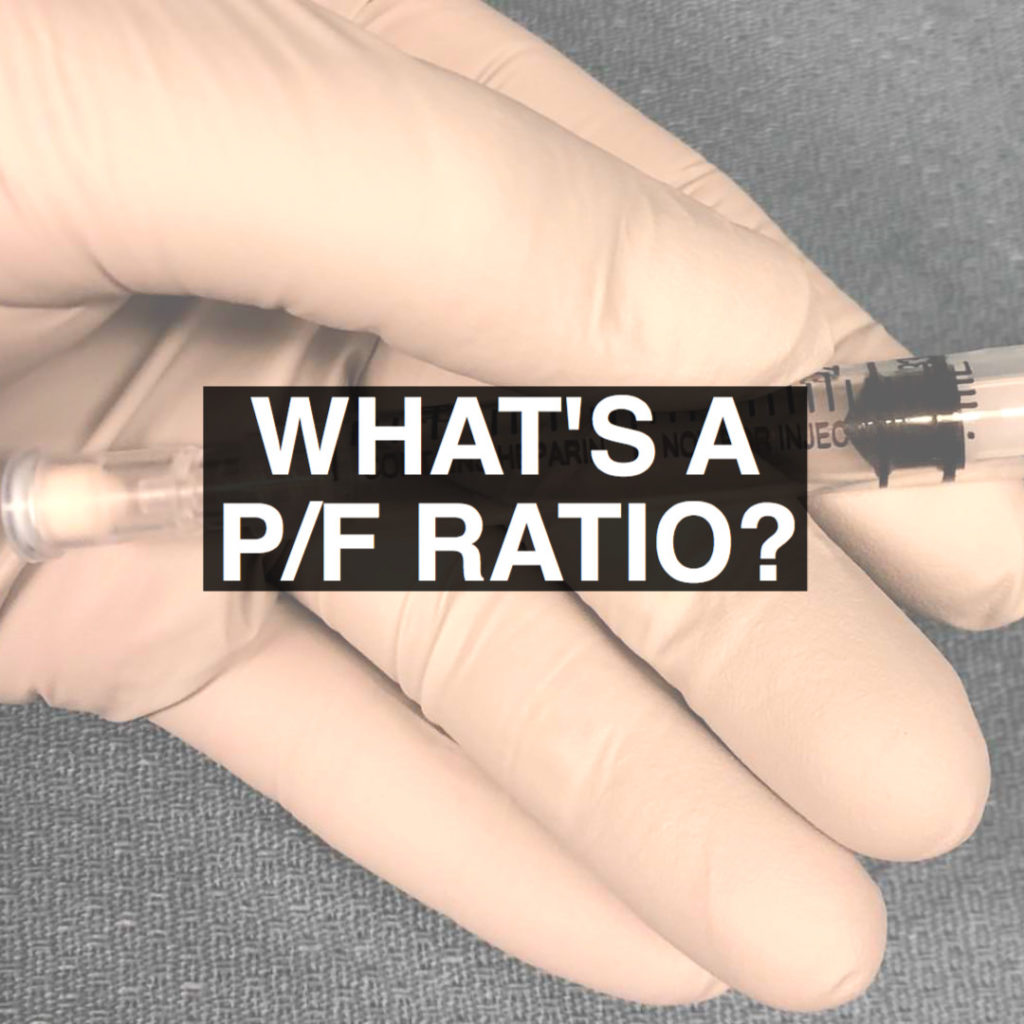The P/F ratio is a simple way to assess the severity of hypoxemia. It’s the ratio of the PaO2 (arterial oxygen partial pressure obtained from an arterial blood gas) to the FiO2 (fraction of inspired oxygen expressed as a decimal). For example, a person breathing room air (21% oxygen, or an FiO2 of 0.21) with a PaO2 of 100 mmHg has a P/F ratio of ~475. P/F is also utilized in many scoring systems including APACHE-IV and stratifying the severity of acute respiratory distress syndrome (ARDS) per the Berlin criteria. For example, a P/F < 100 with other findings of ARDS confers a mortality of ~45% (“severe” ARDS)!
Despite its widespread use, P/F has many disadvantages. First, it doesn’t look at the alveolar concentration of oxygen to determine the “alveolar-arterial” (or A-a) gradient. This gradient is important to determine whether hypoxemia is due to decreased FiO2 or hypoventilation (a normal A-a gradient) versus V/Q mismatch or shunt (increased A-a gradient). P/F is also dependent on barometric pressure (ie, higher altitude = less oxygen tension = less PaO2 = decreased ratio). There’s no accounting for total blood oxygen content or mean airway pressures on positive pressure ventilation either.
With all that said, I still use P/F fairly often as a quick, easy way to gauge oxygenation day-to-day in patients with COVID-19. Keeping everything else equal, this helps me titrate down FiO2 or make the decision to stop proning or discontinue nitric oxide therapy.
How are you all using P/F (especially regarding COVID patients) at your institutions? Are you using other metrics like a/A ratio, the respiratory index, or oxygenation index? Drop me a comment with your thoughts!






